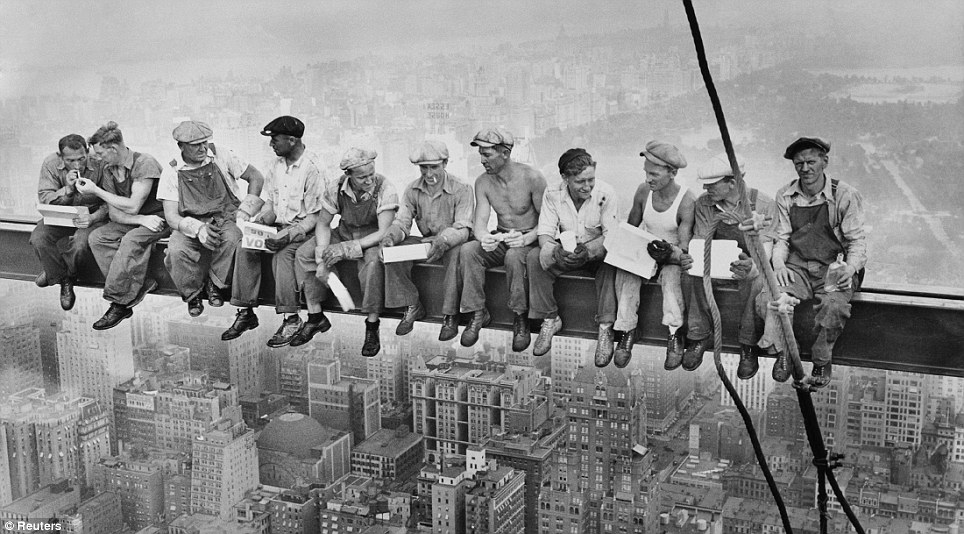The recovery of the U.S. economy had appeared to achieve a breakthrough in the final quarter of 2013. The economy grew at an annual pace of 3.2 percent in the last quarter. But the economy contracted again the first quarter of this year. This weak recovery implies that more jobs have been lost in the recent recession than in any other post-World War II downturn.
Unrepentant Keynesians – such as Krugman – argue that the solution lies in more stimulus spending. For them, the weak jobless recovery is a direct consequence of timid expansionary policies which are insufficient to jump-start aggregate demand. A sluggish demand may be part of the picture, but it cannot fully account for the extremely weak labor market. This explanation ignores the other side of the story: what is happening with individual incentives to work and why we have seen such a decline in labor supply.
The U.S. today has 1.5 million fewer jobs . Although unemployment has fallen from its peak of 10 percent in October 2009, to 6.3 percent in April 2014, the decline in unemployment rate is due primarily because almost three million people are no longer being counted with no indication of recovery in sight. Prior to the recession, 66 percent of the population over the age of 16 was in the labor force. Just six years later, it has fallen to 63 percent.
Economic analysis links the drop in labor participation to factors such as:
- Demographic issues, such as the retirement of the baby boomers. The Congressional Budget Office estimates that demography accounts for one quarter of the drop in participation.
- The reduction in job opportunities. The weak job market has certainly encouraged millions of Americans to pursue options outside the workforce.
- The availability of safety-net programs that act as a tax on working income, reducing the incentives to work.
The number of monthly job openings – which, broadly speaking, reflects labor demand – has increased, almost reaching prerecession levels. On the other hand, the number of actual hires paints a very different picture. The gross number of hires each month also fell sharply during the recession. Unlike job vacancies, however, monthly hiring has only partially recovered since then.
Thus, the demand for labor has recovered faster than the supply. This is not what usually happens during recoveries; as a rule, the labor force increases much sooner than vacancies. So why do we see such a drop in American labor supply?
The Expansion of Safety-net Programs has Decreased the Incentives to Work
One possible explanation, which is often overlooked, is that the expansion of safety-net programs by the U.S. administration has decreased the incentives to work . The unemployment insurance program was expanded to 99 weeks, then 73 weeks and only recently reverted back to 26 weeks in most states – the standard, prerecession length. As benefits began to phase out for the long-term unemployed, some financial disincentives to finding work disappeared.
Casey Mulligan of the University of Chicago, in his book, The Redistribution Recession, shows that government benefits, including extended unemployment insurance, explain half the recent decline in the labor force participation rate. This decline has been primarily driven by people in their prime working years – not by workers retiring or students staying in school. The labor force participation rate for those aged 25 to 54 has dropped two full percentage points since 2007, from 83 percent to 81 percent.
He also found that more generous programs have contributed to a decline in the “self-reliance” rate from 70% to 55% since 2007. The self-reliance rate measures the fraction of a household’s income that is not replaced by transfer payments or subsidies; a lower self-reliance rate implies decreased incentives to work, since the government provides relatively more of a household’s lost income.

Income-replacement programs are necessary, but…
Income-replacement programs are desirable because they provide vital support to people in difficult situations. However, they also effectively act as a tax on working since as beneficiaries earn more income, they lose their eligibility. The loss of benefits is a perverse form of taxation, which discourages out-of-work workers from seeking employment and improving their economic condition. Similarly, decreases in benefits encourage people to work by reducing marginal tax penalties to working.
Mulligan finds that the effective marginal tax rate for the median worker rose 5 percentage points between 2007 and 2013. He also shows that there is a strong correlation between increased effective marginal tax rates and reductions in work hours during and after the recession. Groups that had larger increases in their effective marginal tax rates saw employment drop by far more than similar groups with smaller effective tax increases.
Mulligan’s research is an important addition to decades of empirical research that estimates the negative effects of badly designed social policies. Despite this, policymakers keep discouraging able people from participating in the labor force. Income distribution policies that destroy incentives to work are perverse , because they draw those in need into a poverty trap.
Finally, the work of Mulligan and others makes it clear that the explanations of insufficient demand cannot explain why employment rates have failed to improve. So, the real issue is not how much extra money the government should pump into the economy. The real issue is how we fix the incentives so both people and businesses are willing to work, produce and invest. How can we create a supportive environment for wealth creation? Remember, economics is about incentives — everything else is a footnote .
 Pedro Videla is the director of the Department of Economics. He holds a Ph.D. and an MA in economics, both from the University of Chicago, and a commercial engineering degree in economics from the Universidad Católica de Chile.
Pedro Videla is the director of the Department of Economics. He holds a Ph.D. and an MA in economics, both from the University of Chicago, and a commercial engineering degree in economics from the Universidad Católica de Chile.


